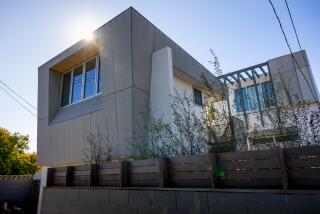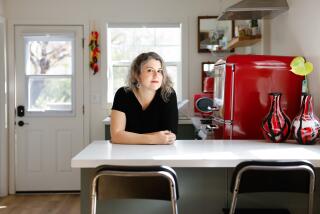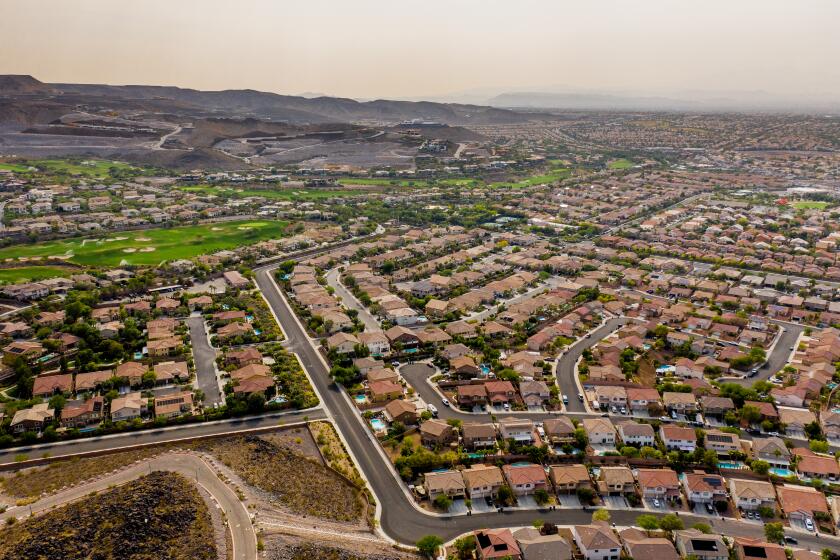No cabin, but it’s cozy
It’s been two years since my wife, Iris, and I bought our 40 acres in the mountains with an old blue railroad coach on it. Most weekends we can barely wait to make the two-hour drive to our little piece of paradise. It’s our personal private park, filled with oaks, pines, red-barked manzanita and silk tassel bushes. In winter it can turn into a snowy wonderland.
We thought by now we’d be staying in a cozy new cabin, but instead we’re still in the old 21-foot trailer that we bought for temporary quarters a year ago. Building a rudimentary 16-by-20-foot cabin continues to be more problematic and expensive than I had guessed.
This whole second-home dream is harder to fulfill than one might think, especially on a budget. It’s complicated by the total lack of public utilities in our area — no power, sewer, phone or water, except from our own well, and no paved streets. That means we must make our own utilities — an expensive proposition.
I thought that I could use solar for minimal power, backed up with a small generator. But I’ve found that even a bare-bones system costs several thousand dollars unless you do it yourself, so I’m reading about photovoltaic arrays, disconnects, charge controllers, battery packs, system meters and inverters. There’s a lot to learn.
We have a well, but I’ve learned that to put a storage tank up on the hill so we have water pressure for things like showers also would cost several thousand dollars. Right now we use a portable solar shower but only when it’s warm outside.
I had planned on using an environmentally sound, self-contained composting toilet — proven and in use in Canada and in some parts of this country — but they are not legal in many California counties. This means digging a septic system, which would cost several thousand dollars as well.
Everything seems to cost several thousand dollars. We could easily spend most of our (perhaps unrealistic) cabin budget, about $20,000, on putting in county-mandated improvements and other infrastructure, before we even start building.
Surprisingly, we have an underground phone line to the property but, of course, no cabin to hook it up to. Our cellphone sometimes works, if we stand in just the right spot.
Building even a tiny cabin will also be more complicated than I thought. I’m stuck on what kind of foundation would disturb the land as little as possible. Up here a cabin has to be well insulated, with double-paned windows. The roof must be able to sustain occasional snow loads, and the plumbing must be protected from hard freezes.
So much for the scenario of the simple shack in the woods, or so it would seem. One begins to see why a property with a cabin already on it costs so much more than land with only a romantic old train car.
And then there were the fires of 2003, which burned so many cabins and homes in San Diego County and the Arrowhead area. That got me thinking, if I’m going to spend all these thousands of dollars on a cabin, I’d really like it to survive a fire or at least be able to get structure insurance for it — both unlikely in this remote area. We had a friend whose brand-new cabin burned to the ground in the San Diego fire, and it was built to be environmentally responsible and fire-resistant. Being in another mountain range, we were untouched, but we too have lots of beetle-killed trees, which fueled those big fires.
Removing dead trees is one way I spend my weekends. I’ve gotten quite good at felling them, at least the smaller ones, dropping the pines almost exactly where I want them to land. I’m about ready to graduate from my $125 on-sale chain saw to something considerably bigger, similar to what you might see in the “Timbersports” series on ESPN.
And even though we bring carloads of wood home every weekend for our fireplace in town, and use the wood to heat the train car in winter, we’ve hardly made a dent in the supply of dead trees. Most people go to a gym for exercise; I split wood.
I’ve given up trying to make the 1910 train car into a place we can stay overnight. When it was dragged up to the property 40 years ago, it was made to look, at least superficially, like an elegant Victorian-era private car. But in later years, wood rats and other vandals made a mess of it, and it’s too hard to plug the many openings where varmints sneak in when we’re away.
I’ve been slowly fixing and repainting the 60-foot train car. Friends wanted me to paint it a more authentic railroad hue, but I like the bright postal blue chosen by the previous owners. The color complements the surroundings and the car looks very much at home in the woods, especially when snow piles up on the roof and hangs on the dark green evergreens that surround it, smoke drifting skyward from the chimney.
But in the summer the metal car can get unbearably hot inside, so we mostly use it in fall and winter when we can build a roaring fire in the old cast-iron fireplace and stay toasty warm, as long as we don’t get too far from the flames. It can get really cold — down to 8 degrees one night last winter.
Traveling to a different climate on the weekend, however, is part of the fun of owning a second property. It’s such a treat to leave our rather bland Westside environment and travel to a place where it snows in winter and thunderstorms in summer. Even if we stay only a day, the change is so complete, so refreshing, that it feels like a week.
Our 40 acres of wilderness were worth every nickel and then some. We look forward to the wildflowers in spring, to the long days of summer and to fall’s bright foliage. Sometimes we can’t get up there in winter, but when we do it can be the most magical time of all.
I wish we could stay longer, and more often, but the used trailer we bought last year is not comfortable. One night in the trailer is bearable, but I probably should have spent more than $2,500 for a bigger or newer one, or at least one in better shape. My wife has managed to cook some tasty meals in its cramped little galley, but the bathroom is impossibly small and the bunks are hard. Not being able to spend several days at a time there makes it difficult to get much done — let alone build a cabin.
The old 12-by-16-foot shed next to the rail car and trailer is now cleaned out and being used to store wood and stuff. I keep looking at it to see whether I could make it into a really small cabin. My wife says no — it’s way too small — but I wonder whether I couldn’t make it more livable than the trailer.
So I continue to plot and draw plans, trying to stay within our budget, and dream of that time when I can go to sleep in my warm little cabin and wake to a fresh snowfall, or to a day warm, bright and unbelievably blue.
*
On the Web
To read the previous installments of this second-home saga, visit latimes.com/smausland.
*
Robert Smaus can be e-mailed at rsmaus@earthlink.net.






